STRIPED BASS

HYBRID STRIPED BASS

Originally an Atlantic Ocean anadromous fish, those that migrate from freshwater rivers to the ocean and back to spawn in their natal streams, striped bass were accidentally discovered to be able to survive and reproduce in freshwater alone when they became landlocked by dam construction on the Santee-Cooper River in South Carolina during the 1940s.
Since that time, striped bass have been stocked in reservoirs across the country. Lake Texoma is home to one of the most prolific reproducing landlocked striped bass populations in the US.
ODWC's Byron State Fish Hatchery produces a hybrid striped bass (female striped bass eggs fertilized by male white bass milt). These aggressive open water fish are a favorite amongst avid Oklahoma anglers.
SPECIES PROFILE
- Oklahoma Distribution
Naturally reproducing populations of striped bass have developed in lakes Texoma and Keystone and in the Arkansas River Navigation System. Foss, Tenkiller, Canton, Great Salt Plains, Grand and Kaw lakes also have been stocked.
Hybrid striped bass are stocked in lakes statewide.
- Description
The striped bass is not arched at the back and has two distinct tongue patches. It is also identified by the dark, usually unbroken lines on each side. Similar-looking species include the hybrid striped bass and the white bass.
The hybrid striped bass, which is a cross between the white bass and the striped bass, has a slightly arched back and two tongue patches. It also has some broken lines on each side.
The first Oklahoma stocking of hybrid striped bass was in Sooner Lake in 1977. Subsequent stockings have been made in lakes statewide, including Konawa, Optima, Ft. Supply, Tom Steed, Altus-Lugert, Overholser, Grand, Heyburn, Atoka, Ft. Cobb, Salt Plains, Waurika and Ellsworth.
- Habitat
Striped bass are found cruising in large schools in open waters. They do not frequent shorelines.
Hybrid striped bass appear to prefer areas within lakes and streams similar to striped bass and white bass, typically traveling in large schools in open water.
- Natural Food Sources
- Insects
- Shad
- Minnows
- Spawning
The spawning urge is triggered at water temperatures of 55°F to 70°F, reaching a peak at about 65°F. Female striped bass may produce up to five million eggs. The eggs are semi-buoyant and require a moving, unobstructed river during incubation. When the water is still, eggs sink into the silt and the embryos die of suffocation.
Hybrid striped bass are hatchery-produced by crossing female striped bass with male white bass. Although both male and female hybrid striped bass attain sexual maturity, natural reproduction has not been observed.
- Fish Facts
- Striped bass were originally a marine or estuarine species. An anadromous spawner (ascends freshwater streams to spawn), striped bass became landlocked in an artificial impoundment near the Atlantic coast. They adapted so well to that environment that many states, including Oklahoma, began transplanting stripers. Striped bass can reach weights of 40 pounds or more.
- As a sport fish, hybrid striped bass are probably best known for their rapid growth and fighting ability. They can attain weights of six to seven pounds by three years of age and 18 to 20 pounds by eight to nine years of age. Hybrid striped bass are a valuable put, grow and take sport fish in lakes with large shad populations, but with little suitable habitat for striped bass and white bass.
FISHING TIPS
Try lipless crankbaits in gold, silver or red patterns; sassy shad and swimbaits in white or chartreuse; lipped crankbaits in shad-colored variations; white or chartreuse marabou jigs and curly tail grubs on the windblown side of points, rip-rap and coves in the low-light hours of the mornings and evenings.
If fish begin to boil on top of the water, switch to topwater lures such as poppers, buzzbaits, walk-the-dog style lures and propellor baits.
Bait anglers can use a live minnow or shad on a small- to medium-sized bait holding hook attached to a 12-inch leader line below a barrel swivel and ¼ to ½-ounce egg weight on main lake flats, channel drop-offs and ledges. Let the line off of the reel directly below the boat to your desired depth or use a slip float if fishing from the bank.
Bank anglers have the best success around windblown shoreline and dam during the shad spawn in May and the pre-winter gorge during the fall months.
Boat anglers should utilize fish finding electronics to locate schools of open water shad. Heavy concentrations of birds can also give away large bait schools. Striped bass and hybrid striped bass are typically in the immediate area.
Vertically jigging bladed baits, spoons and slabs can also be effective.
The tailwaters at Kaw, Keystone and Eufaula offer anglers the chance to catch trophy-sized striped bass. The Lower Illinois River has good striped bass fishing during the summer months when water is being generated through the dam.
The tailwaters at Oologah, Grand, Hudson and Ft. Gibson offer anglers the chance to catch trophy-sized hybrid striped bass.
Habitat to Target
- Windblown shoreline: points, rip-rap and dam during the shad spawn in May and the pre-winter gorge during the fall months.
- Drop-offs & Ledges: areas of rapid depth change such as channel breaks, off-shore humps, points and dam.
- Open Water: areas of the main lake where bait schools are located.
Rod/Reel Setup
- Medium to Medium-Heavy rod
- Spincasting, spinning or baitcasting reel
- 8-pound to 14-pound test line
Top Lures
- Lipless Crankbait
2" to 4" lipless crankbait in shades of white, silver, chartreuse, orange, purple or pink
- Editor's pick: 3" 1/2 ounce Bill Lewis Original Rat-L-Trap in Sexy Chrome
Image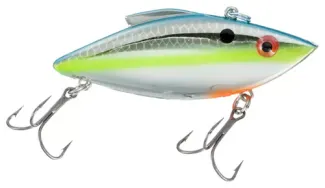
- Lipped Crankbait
3" to 5" lipped crankbait in shades of white, silver, chartreuse, orange, purple or pink
- Editor's pick: 5" 5/8th ounce Cotton Cordell Deep Diving Red Fin in Chrome/Black Back, Chrome Blue/Back or Pearl/Red
Image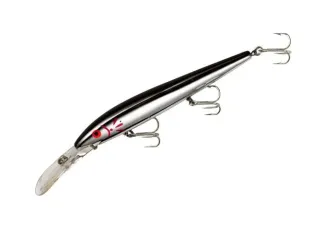
- Jerkbait
3" to 6" jerkbait in shades of white, silver, chartreuse, orange, purple or pink
- Editor's pick: 4-3/4" 1/2 ounce Rapala RipStop in Silver, Clown or Albino Shiner
Image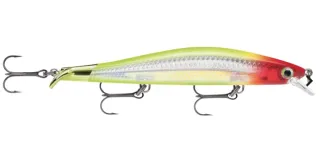
- Swimbait
3" to 8" swimbait in shades of white, silver, chartreuse, orange, purple or pink
- Editor's pick: 6-1/2” 1/2 ounce Gambler GZ Striper Swimbait in Striper Pink or Mackerel
Image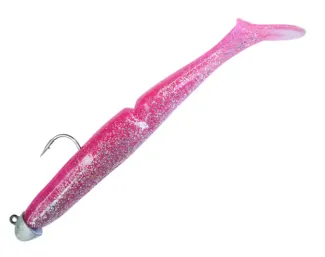
- Curly Tail Grub
2" to 6" curly tail grub in shades of white, silver, chartreuse, orange, purple or pink
- Editor's pick: 6" Kalin's Mogambo Grub in Chartreuse Hologram or White paired with a 1/8th to 1/2 ounce jig-head.
Image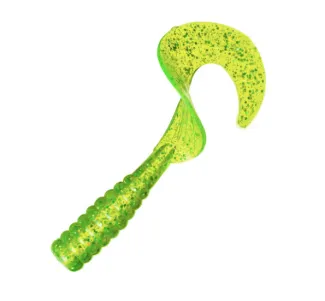
- Spoon
1/4th to 4.5-ounce spoon in shades of silver, gold or chartreuse
- Editor's pick: 8" 3-1/2 ounce Nicholas Lures Ben Parker Striper Edition Magnum Spoon in Shattered Glass Silver, Silver Chrome or Chartreuse
Image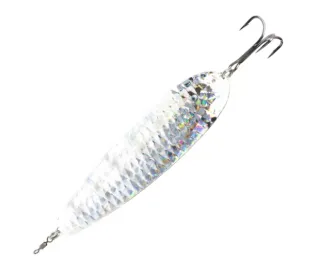
- Slab
1/4th ounce 1-ounce slab in shades of silver, gold or chartreuse
- Editor's pick: 2-1/2" 7/8th ounce Dixie Jet Slab Spoon in Silver, Blood Trail or Coleslaw
Image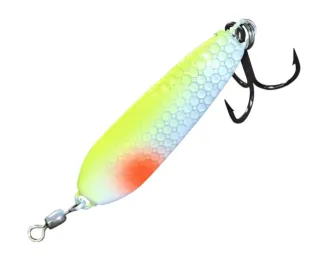
- Blade Bait
1/4th to 1-ounce blade bait in shades of silver, gold or chartreuse
- Editor's pick: 2-1/2" 3/4th ounce Acme V-Rod Bladebait in Sun E, Ice Man or Pony Boy
Image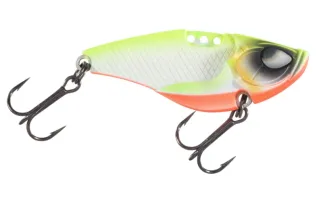
Top Bait
- Shad
Freshly netted shad from the body of water you're fishing. Use shad in the 2-inch to 4-inch size range.
Image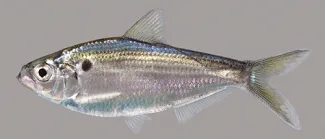
- Minnow
A bucket of minnows from a bait store (typically fathead minnows). Use minnows in the 2-inch to 4-inch size range.
Image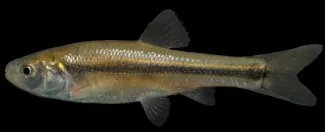
CLEANING TIPS
COOKING TIPS




